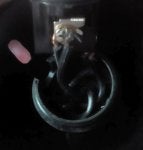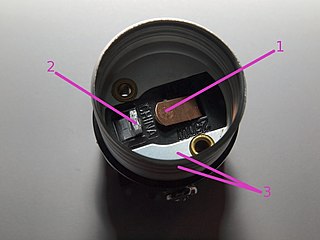Hi all.
I just bought some cheap floor lamps at Walmart that were on deep discount, and the main lamp has a 3 way socket. I want to change the socket to a standard because, 3 way LED's are expensive, and I don't like running the 3 way Incan's in the warmer months because of the heat.
I tested a 3 way Incan bulb and it will run fine on the highest setting, but a standard LED will not run at all. At best, it lightly flickers on the highest setting. If it would run fine on high like the Incan, then that would work, as I really only use these big lamps on high anyway.
So, I'm wanting to do one of two things:
1) If perhaps there is an easier way (and cheaper) than replacing the socket, perhaps just rewiring the current one to turn it into a standard lamp? That would be nice and save me money. Can this be done? If so, how do I do it properly without turning the outside of the lamp into a shock post!
I will also ask here if anyone makes a simple screw in adapter that converts a 3 way to a regular without having to do any wiring. That would be great!
2) If #1 won't work, I have already bought a replacement standard socket, but I still need to know how to wire it correctly.
As you can see in the pics, each screw has 2 wires going to it, and these wires go down to another junction where a side lamp is connected.
It's harder to see in the pics, but the silver screw seems to have one ribbed wire, and one wire that has a large white stripe on it, and may also be ribbed. The brass screw has one smooth wire, and the other seems to have multiple super thin white lines on it. I suppose that makes sense to have each wire marked in a 4 wire setup.
Any help is appreciated!
I just bought some cheap floor lamps at Walmart that were on deep discount, and the main lamp has a 3 way socket. I want to change the socket to a standard because, 3 way LED's are expensive, and I don't like running the 3 way Incan's in the warmer months because of the heat.
I tested a 3 way Incan bulb and it will run fine on the highest setting, but a standard LED will not run at all. At best, it lightly flickers on the highest setting. If it would run fine on high like the Incan, then that would work, as I really only use these big lamps on high anyway.
So, I'm wanting to do one of two things:
1) If perhaps there is an easier way (and cheaper) than replacing the socket, perhaps just rewiring the current one to turn it into a standard lamp? That would be nice and save me money. Can this be done? If so, how do I do it properly without turning the outside of the lamp into a shock post!
I will also ask here if anyone makes a simple screw in adapter that converts a 3 way to a regular without having to do any wiring. That would be great!
2) If #1 won't work, I have already bought a replacement standard socket, but I still need to know how to wire it correctly.
As you can see in the pics, each screw has 2 wires going to it, and these wires go down to another junction where a side lamp is connected.
It's harder to see in the pics, but the silver screw seems to have one ribbed wire, and one wire that has a large white stripe on it, and may also be ribbed. The brass screw has one smooth wire, and the other seems to have multiple super thin white lines on it. I suppose that makes sense to have each wire marked in a 4 wire setup.
Any help is appreciated!








